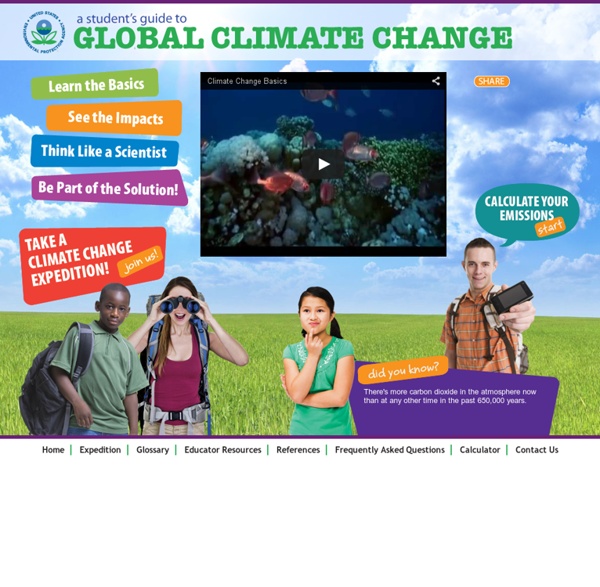



http://www.epa.gov/climatestudents/
Related: Group AssignmentWWF: Climate change Carbon dioxide, or CO2, is the most significant of the gases in our atmosphere which keep the Earth warm. 4 billion years ago its concentration in the atmosphere was much higher than today - 80% compared to today's 0.03%. But most of it was removed through photosynthesis over time. All this carbon dioxide became locked in organisms and then minerals such as oil, coal and petroleum inside the Earth's crust. A natural carbon dioxide cycle keeps the amount of CO2 in our atmosphere in balance.
A weatherman breaks down in tears and vows NEVER to fly again due to grim climate-change report Eric Holthaus, who used to do weather for Wall Street Journal, was reacting to Friday's findings from the Intergovernmental Panel on Climate Change Scientists found in the report that it was 'extremely likely' that humans are causing warming trendsHolthaus said he has decided not to have children in order to leave a lighter carbon footprint, and has considered having a vasectomyHe tweeted on Friday 'no children, happy to go extinct'The weatherman also said he is committed to stop flying as 'it's not worth the climate'US Secretary of State, John Kerry, calls the report 'an alarm bell'It means scientists have moved from being 90 per cent sure to 95 per cent sure regarding global warming By Marie-louise Olson Published: 12:36 GMT, 28 September 2013 | Updated: 17:43 GMT, 30 September 2013
American Pika Genus: Ochotona Species: princeps For years, the polar bear has been the symbol of the global warming movement. But today, the American pika has good grounds to compete with the polar bear for this unwanted honor. WWF: Climate Change Shop to Support WWF Shop at AmazonSmile to support our global conservation efforts every time you buy. It’s the same Amazon.com you know—same products, same prices—and 0.5% of each purchase price is donated back to WWF.
Climate Interactive Climate Interactive creates interactive, easy-to-use, and scientifically rigorous tools that help people understand how to address the complex, interconnected challenges that affect our lives. Based on a long tradition of system dynamics modeling out of MIT that explores the interplay between social and planetary systems, our simulations help people see connections, play out scenarios, and see what works to address the biggest challenges we face. Our simulations cover a range of topics, from climate change and clean energy to disaster risk reduction and resilience. Some of our tools are designed for policy makers, others for teachers and citizens; all are created out of a common set of principles:
Alex Lin, Teenage Activist He's overseen the recycling of 300,000 pounds of e-waste. He's successfully lobbied the Rhode Island state legislature to ban the dumping of electronics. He's used refurbished computers to create media centers in developing countries like Cameroon and Sri Lanka to foster computer literacy. What is climate change? Media playback is unsupported on your device BBC News looks at what we know and don't know about the Earth's changing climate. What is climate change? The planet's climate has constantly been changing over geological time. The global average temperature today is about 15C, though geological evidence suggests it has been much higher and lower in the past. However, the current period of warming is occurring more rapidly than many past events.
Global Warming and the American Pika The tiny pika, a cousin of the rabbit that lives on mountain peaks in the western United States, is running out of options. In fact, they have already disappeared from over one-third of their previously known habitat in Oregon and Nevada. Now, the situation is so dire that the U.S.